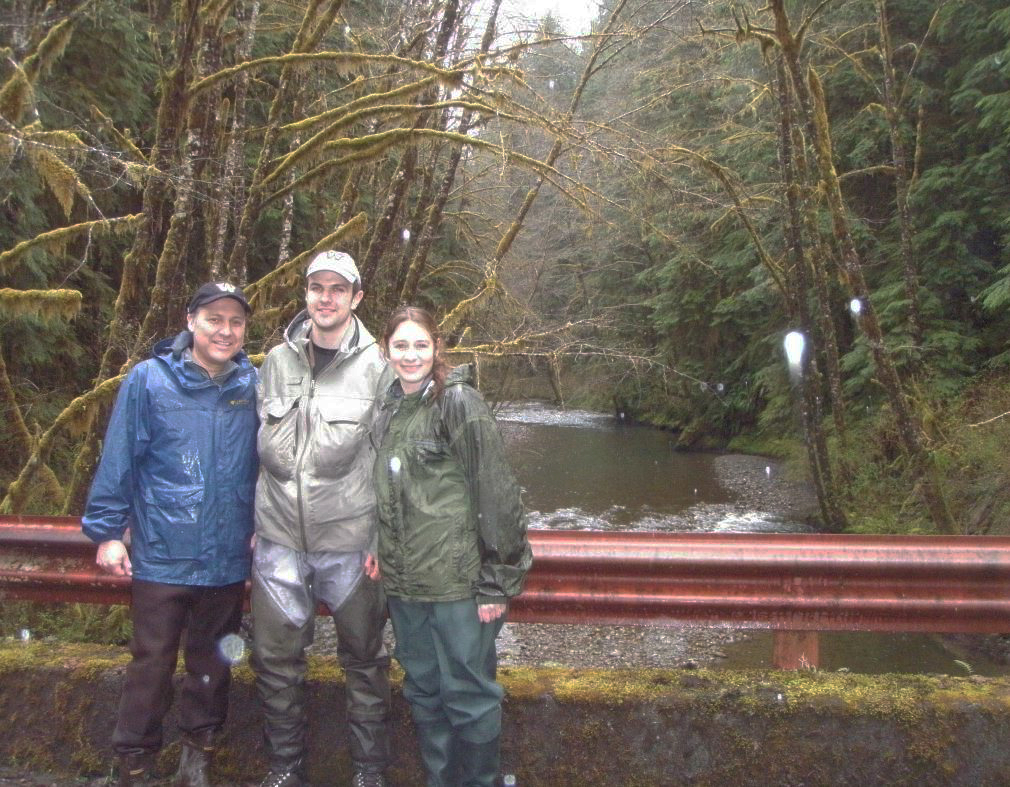Hair Cells in the Hatchery

This work started as a ongoing collaboration with Dr. Joe Sisneros at the University of Washington, Dr. Andrew Brown at the University of Colorado, and Mr. Tyler Jurasin, a tribal biologist with the Quinault Indian Nation.
Salmon are big business here in the Pacific northwest! Decades of over-fishing and habitat degradation have depleted native salmon and steelhead runs. Most of the salmon and steelhead in the rivers today originate in state- and federally-funded hatcheries, such as those run by the Washington Department of Fish and Wildlife.
Our current research focuses on how hatchery conditions impact fish sensory systems, particularly the inner ear and lateral line. This research is led by Biology PhD student Rikeem Sholes, who is also a fisheries biology with the US Fish and Wildlife Service.
 The picture to the left is the head of a juvenile steelhead with lateral line organs labeled with the vital dye DASPEI (glowing orange dots). Note that the teeth are autofluorescent! We found that hatchery-reared juvenile steelhead had significantly fewer lateral line sensory organs that wild-origin fish (Brown et al. 2013). Hatchery fish also had more crystallized otoliths, a phenomenon correlated with reduced auditory sensitivity (Oxman et al. 2007).
The picture to the left is the head of a juvenile steelhead with lateral line organs labeled with the vital dye DASPEI (glowing orange dots). Note that the teeth are autofluorescent! We found that hatchery-reared juvenile steelhead had significantly fewer lateral line sensory organs that wild-origin fish (Brown et al. 2013). Hatchery fish also had more crystallized otoliths, a phenomenon correlated with reduced auditory sensitivity (Oxman et al. 2007).
